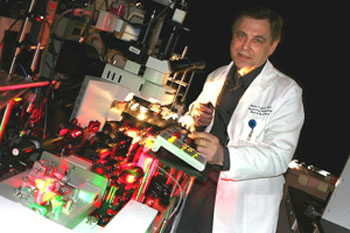 Gathering nanomedicine efforts and resources from within the University of Arkansas for Medical Sciences (UAMS) and statewide collaborators under one umbrella, UAMS today announced the creation of the Arkansas Nanomedicine Center in the College of Medicine.
Gathering nanomedicine efforts and resources from within the University of Arkansas for Medical Sciences (UAMS) and statewide collaborators under one umbrella, UAMS today announced the creation of the Arkansas Nanomedicine Center in the College of Medicine.
Jan 23rd, 2012
Read more
The Venture Acceleration Fund of Los Alamos National Security, LLC, the company that manages and operates Los Alamos National Laboratory for the National Nuclear Security Administration, is now accepting applications for the 2012 calendar year. The three companies selected in the completion will receive up to $100,000 each to commercialize technology and take it to market faster.
Jan 23rd, 2012
Read more
Graphene does not affect the wetting behaviour of several substrates, reports a study published online in Nature Materials this week.
Jan 23rd, 2012
Read more
Physicists at the University of New South Wales have observed a new kind of interaction that can arise between electrons in a single-atom silicon transistor.
Jan 23rd, 2012
Read more
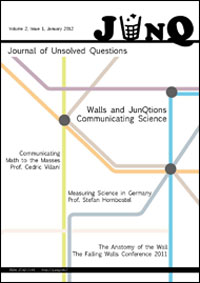 The journal's goal is to provide a forum through which information can be made available on the kind of excellent but inconclusive scientific projects that established scientific journals tend to ignore.
The journal's goal is to provide a forum through which information can be made available on the kind of excellent but inconclusive scientific projects that established scientific journals tend to ignore.
Jan 23rd, 2012
Read more
Since early January 2012, Angelika Kuehnle, Professor of Physical Chemistry at Johannes Gutenberg University Mainz, and Andre Gourdon, Director of the Materials Science Institute CEMES-CNRS in Toulouse, France, have been jointly studying the synthesis of organic molecules on non-conducting surfaces.
Jan 23rd, 2012
Read more
Researchers at Duke University Medical Center have created synthetic nanoparticles that target lymph nodes and greatly boost vaccine responses.
Jan 22nd, 2012
Read more
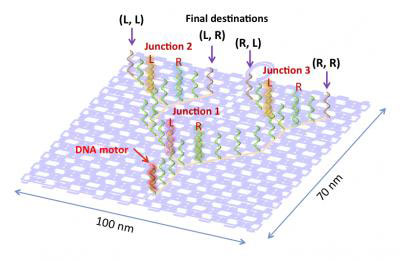 Expanding on previous work with engines traveling on straight tracks, a team of researchers at Kyoto University and the University of Oxford have successfully used DNA building blocks to construct a motor capable of navigating a programmable network of tracks with multiple switches.
Expanding on previous work with engines traveling on straight tracks, a team of researchers at Kyoto University and the University of Oxford have successfully used DNA building blocks to construct a motor capable of navigating a programmable network of tracks with multiple switches.
Jan 22nd, 2012
Read more
Researchers at the Niels Bohr Institute have combined two worlds - quantum physics and nano physics, and this has led to the discovery of a new method for laser cooling semiconductor membranes.
Jan 22nd, 2012
Read more
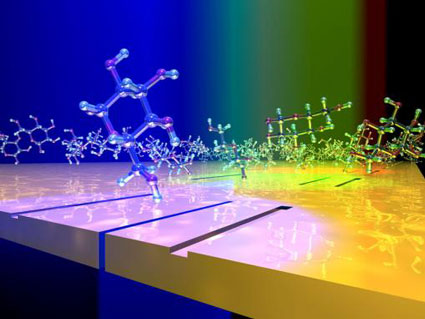 Engineers at Brown University have designed a biological device that can measure glucose concentrations in human saliva. The technique could eliminate the need for diabetics to draw blood to check their glucose levels. The biochip uses plasmonic interferometers and could be used to measure a range of biological and environmental substances.
Engineers at Brown University have designed a biological device that can measure glucose concentrations in human saliva. The technique could eliminate the need for diabetics to draw blood to check their glucose levels. The biochip uses plasmonic interferometers and could be used to measure a range of biological and environmental substances.
Jan 22nd, 2012
Read more
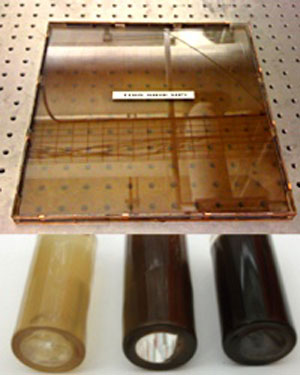 A team of UC Merced professors and students discovered that changing the shape of a solar concentrator significantly increases its efficiency, bringing its use closer to reality.
A team of UC Merced professors and students discovered that changing the shape of a solar concentrator significantly increases its efficiency, bringing its use closer to reality.
Jan 21st, 2012
Read more
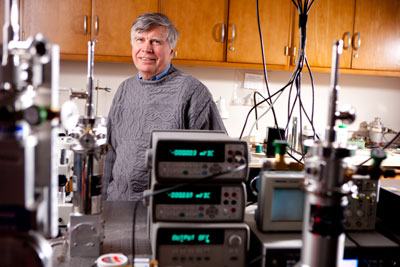 Researchers from the University at Buffalo, Army Research Laboratory and Air Force Office of Scientific Research have developed a new, nanomaterials-based technology that has the potential to increase the efficiency of photovoltaic cells up to 45 percent.
Researchers from the University at Buffalo, Army Research Laboratory and Air Force Office of Scientific Research have developed a new, nanomaterials-based technology that has the potential to increase the efficiency of photovoltaic cells up to 45 percent.
Jan 20th, 2012
Read more
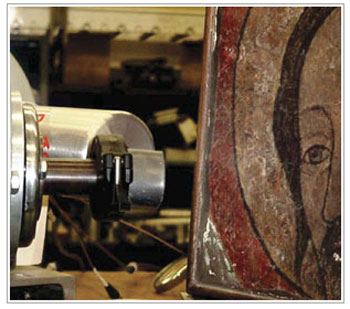 University of Notre Dame nuclear physicists Philippe Collon and Michael Wiescher are using accelerated ion beams to pinpoint the age and origin of material used in pottery, painting, metalwork and other art. The results of their tests can serve as powerful forensic tools to reveal counterfeit art work, without the destruction of any sample as required in some chemical analysis.
University of Notre Dame nuclear physicists Philippe Collon and Michael Wiescher are using accelerated ion beams to pinpoint the age and origin of material used in pottery, painting, metalwork and other art. The results of their tests can serve as powerful forensic tools to reveal counterfeit art work, without the destruction of any sample as required in some chemical analysis.
Jan 20th, 2012
Read more
Students will be well-prepared to join New York State's fast-growing nanotechnology workforce.
Jan 20th, 2012
Read more
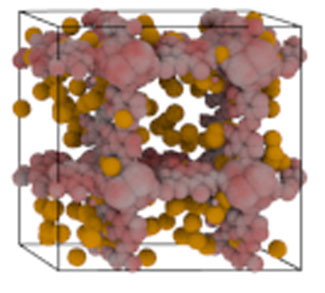 The answers to producing sustainable energy are brewing in university labs around the country, and Northwestern University is ready with startup ventures to take new technologies to market.
The answers to producing sustainable energy are brewing in university labs around the country, and Northwestern University is ready with startup ventures to take new technologies to market.
Jan 20th, 2012
Read more
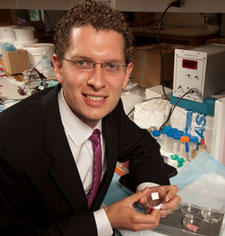 Lead product is surgical mesh made of nanofibers.
Lead product is surgical mesh made of nanofibers.
Jan 20th, 2012
Read more
 Gathering nanomedicine efforts and resources from within the University of Arkansas for Medical Sciences (UAMS) and statewide collaborators under one umbrella, UAMS today announced the creation of the Arkansas Nanomedicine Center in the College of Medicine.
Gathering nanomedicine efforts and resources from within the University of Arkansas for Medical Sciences (UAMS) and statewide collaborators under one umbrella, UAMS today announced the creation of the Arkansas Nanomedicine Center in the College of Medicine.








 Subscribe to our Nanotechnology News feed
Subscribe to our Nanotechnology News feed